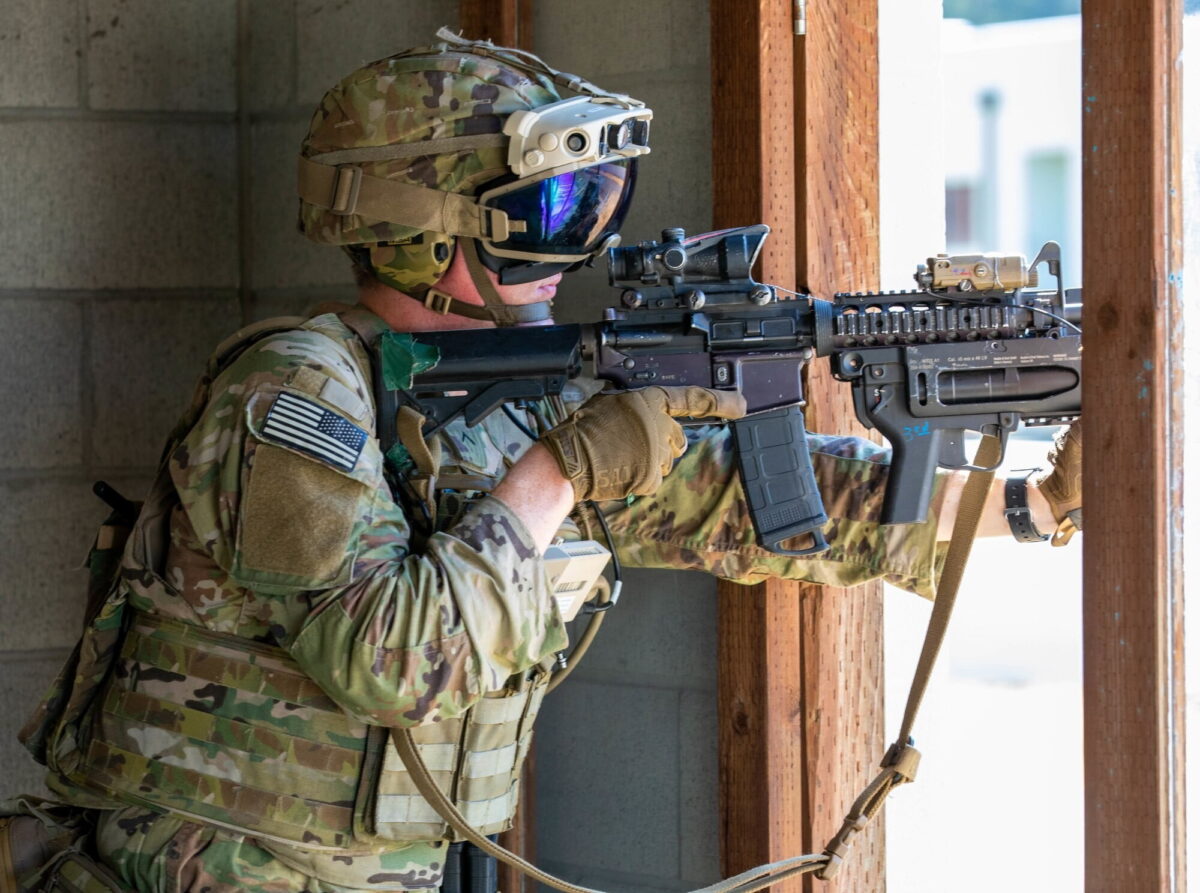New military Hololens pushed back to 2025

The US military and Microsoft want to save the Hololens military project. An all-around improved tech headset could help, but it still needs time.
So far, the military Hololens (IVAS) has received scathing reviews from soldiers: too heavy, headache-inducing, no added value, and the bright displays make you a target. Nevertheless, the U.S. Army has ordered 10,000 units of versions 1.0 and 1.1 of the combat headsets, to be delivered in 2024.
The new IVAS version 1.2 is expected to address existing criticisms starting in 2025: It will still be based on the basic technology of the commercial Hololens, but will feature numerous changes. Version 1.2 is expected to be used in field tests for the first time in 2025.
The current prototype, which is still under development, separates the computing unit from the controller. The computer is now attached to the back of the helmet, while the controller can be worn anywhere on the upper body. This solves a comfort problem: In previous versions, the controller and computer were attached together on the chest, and the soldier felt front-heavy.
Earlier versions of the headset weighed about 3.4 pounds (1.54 kg) in total, including 2.4 pounds (1.09 kg) on the front of the helmet. The total weight of the 1.2 is 2.85 pounds (1.29 kg), which should be about the same as a standard pair of night vision goggles.
Military Hololens combats nausea and headaches
Other improvements include an eye-relief adjustment that could help with headaches if set correctly, better weapon compatibility for the headset, better ventilation, and a display that provides a wider peripheral field of view. The U.S. Army and Microsoft are working with numerous internal and external partners to address the causes of motion sickness.
Microsoft is also improving the software. For example, the headset can now display color-coded navigation points and other map markers. This allows a soldier to select specific elements, place them on a virtual map, and use them to generate a route that he or she can share with other soldiers.
Similarly, soldiers can collaborate to create a virtual 3D tactical table of a terrain or building complex to plan their mission. A tracking feature is designed to more accurately measure shooting performance in training scenarios.
To address complaints about image quality, Microsoft has reduced the field of view of the current prototype, but it is still reported to be larger than current night vision devices. Problems with image distortion have been fixed via software.
However, the night vision quality is worse than previous versions of IVAS and conventional night vision devices, which a U.S. general said was due to the combination of AR with "new forms of night vision," which is claimed to take existing night vision technology to a new level.
The commercial Hololens remains in limbo - it's uncertain if or when there will be new hardware. Most recently, Microsoft said that a hardware update for the Hololens 2 was possible. There has been no talk of a Hololens 3. Microsoft recently committed to the Industrial Metaverse, which includes AR with Hololens.
Note: Links to online stores in articles can be so-called affiliate links. If you buy through this link, MIXED receives a commission from the provider. For you the price does not change.